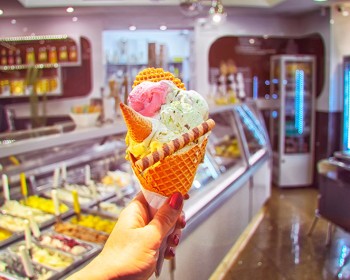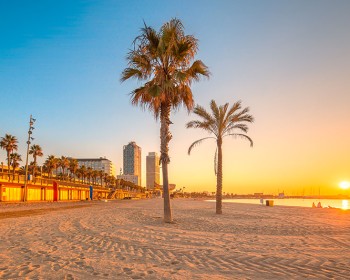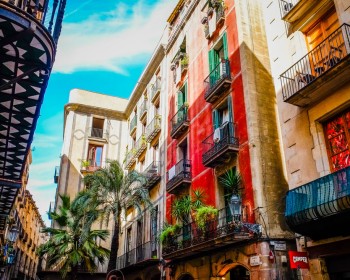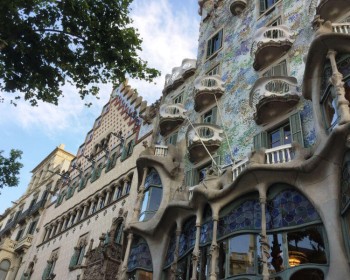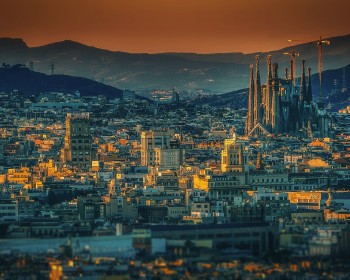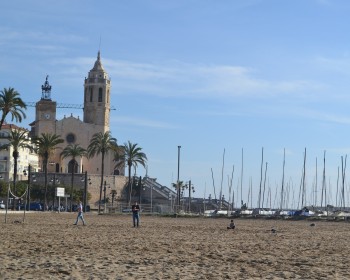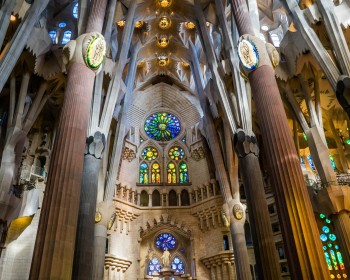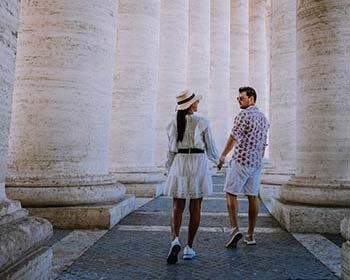Gaudí's inspiration came mainly from nature, his unique and explosive personality led him to pioneer the Expressionism and other avant-gardist movements, like the Surrealism.
Gaudí tried to combine different styles and new shapes and his interest was focused on what came from the East side of the world, for example the Egyptian culture, the Indian, the Persian and the Chinese ones. His restlessness brought him to mix the past with the new expressions, going beyond the limits of the present moment and enduring.
The city that concentrates the most of Gaudí’s architectural production is Barcelona.
Discover our Barcelona and Gaudí Private Tour!
Plaça Reial (or Plaza Real in Spanish)
It is a square in the core of the gothic district. Famous for the life at night, the Plaza is one of the most fascinating and picturesque squares in Barcelona. It is located next to La Rambla, “the only street in the world I would like to never ends” (Federico García Lorca).
In the Plaza, you can find one of the first work of Gaudí’s: wrought-iron street lamps. While Gaudí was still studying, the Major of Barcelona charged him with the project of new lamps in Plaza Real. These lamps have six arms and are characterized by a stone base on which Gaudí put a big iron medallion with floral decorations. From this medallion a column stands, embellished with a shield and some red flowers on the branches that support the crystal lamps. The most peculiar aspects are the coiled snakes on the cupola and a helmet with wings, symbols of Mercury, the Roman divinity of trades, the principal business of the city thanks to the presence of the port, not so far from the Plaza itself.
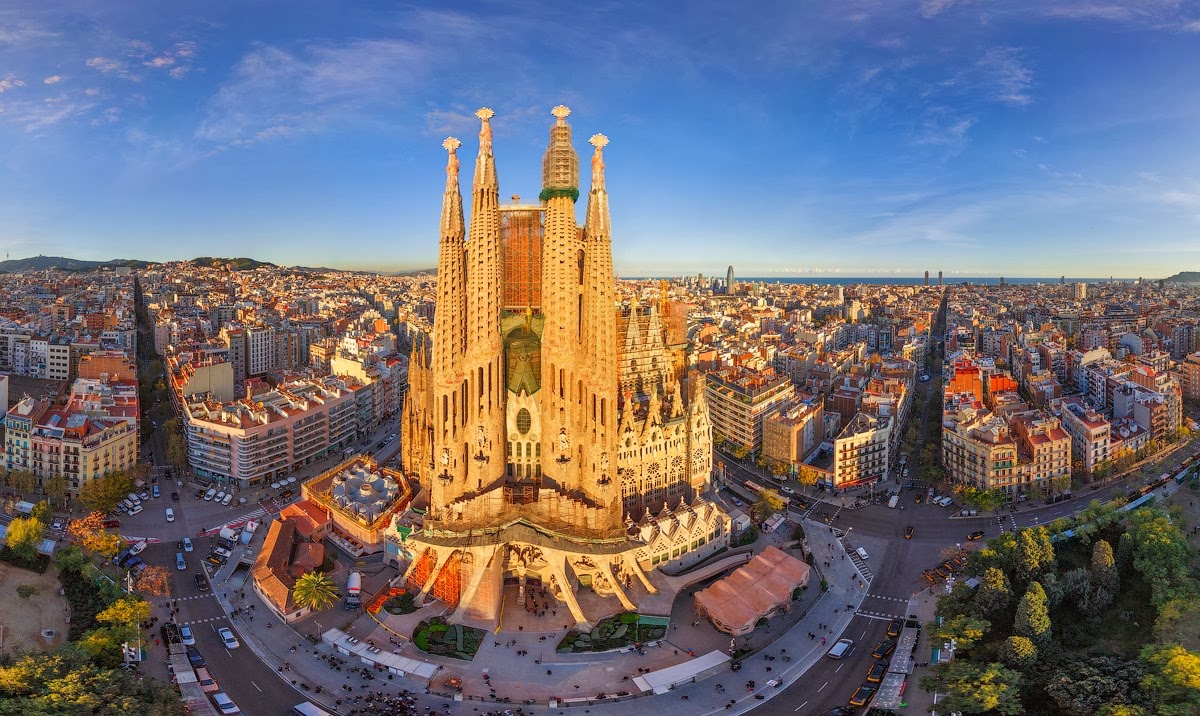
Sagrada Familia
It is the work that fully expresses Gaudí's profound religious faith. Started in 1882, it became the one and only ethic task of the artist so much representative of its creed that he moved in to work and study days and nights.
Discover our Express Tour of the Sagrada Familia!
The artist stands out from the historical tradition to develop a new style extremely bright and fantastic characterized by curved lines, odd shapes and intense colors due to the use of new materials like ceramic and glass. His works have always connections with the nature that he loves in a visceral way because it is God's creation and his works were supposed to be a connection between men and God. Even if it is a Church the Sagrada was not commissioned by a pontifex, but a community of devotees used their savings to buy the ground on which now stands the Sagrada. The external façade shows the Catholic Church: Jesus, Mary, the Apostles and the Saints. Its interior is like a forest were the columns are organized like trees trunks with their branches and the light penetrating in between gives a pastoral atmosphere to the inner part of Gaudí's masterpiece.
Casa Batló
Considered one of the most original of Gaudí’s works, it is located on Passeig de Gracia at door number 43.
In 1904 Josep Batló, a rich industrialist, asked Gaudí to restore a building he had bought in one of the most luxurious districts in Barcelona. When he finished his work the apartment was completely different, even in the structure. As soon as Gaudí begun to work on it, he had already developed his own personal style, extremely innovative but functional first of all. He thought for a long time about the organization of the new building, and everything in the house is arranged around an open space, the patio or courtyard, in order to make it bright and airy.
Characterized by a sandstone façade, its covering is made alternating shining potteries and glasses and the first impression you have, due to the colored tiles too, is that of a big wave shattering on a rocky coast. The roof is covered with dazzling tiles as well, giving the idea of the skin of an ancient reptile or a colorful dragon.
The total effect is that Casa Batló is the result of a brilliant mind away from reality and fully immersed in the imagination.
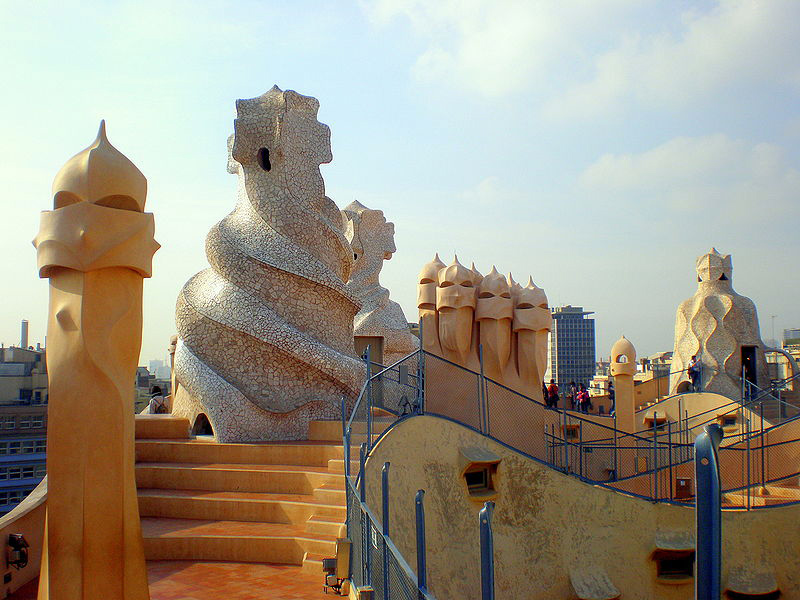
Casa Milá (Casa Pedrera)
Built between 1905 and 1920, it is characterized by the innovative style of Gaudí.
The wavy shape is supposed to give the impression of a rock consumed by atmospheric agents like the waves of the ocean. For this reason, it is also known as “La Pedrera”, that is to say the quarry.
The whole building develops around two curvilinear courtyards and it is organized like two different constructions with their own doors sharing just the first floor and the common façade. The 33 balconies of the five floors reflect the naturalistic vision of the artist, their wrought-iron railings represent the vegetable world. Gaudí thought that the curved lines indicate God and the windows reflect this idea too creating spaces that suggest caves.
Every little detail is carefully projected and mixed with odd and peculiar elements.
The terrace is worthy attention, it is actually an extraordinary chimney exhibition. In addition to this the attic is also known as Espacio Gaudí, there you can find scale models, drawings and videos from and about the artist.
Nowadays Casa Milá is a cultural center where a lot of exhibitions, concerts and conferences take place. It includes a cafeteria and a bookshop too.
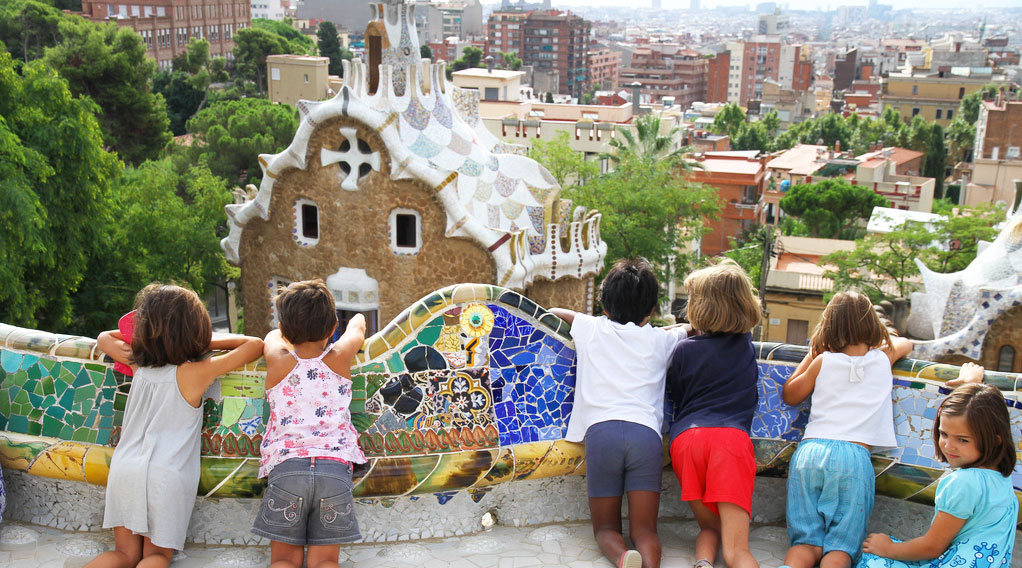
Park Güell
It was projected by Antoni Gaudí at the beginning of the X century.
A businessman asked him to build an English style garden where citizens and tourists could have some rest taking advantage of a breathtaking view across Barcelona. There is a house in the garden where Gaudí moved in 1906 with his family, now this house is a museum where furniture and objects designed by the architect are displayed, with some of his coworker's works too.
As he did for Casa Batlló, he used the trencadís technique, it means that he decorated all the attractions alternating shining potteries, glasses and colored tiles creating different kind of mosaics with waste materials. All around the garden everything represents fantastic animals.
The most visited place is the main terrace known as "Plaza de la naturaleza", it is sorrounded by a long bench that due to its shape seems a big marine snake. At the entrance of the park there is a big stairway divided up into two parts, among these you can find some decorations like the big shield of Catalonia and a colorful dragon or salamander made with mosaics. This big stairway brings to the "Sala Hipostilia" composed of 86 columns simulating 3 naves like in Churches.
Do you want to know where does my inspiration come from? From a tree: the tree supports its branches, these support the smaller ones and the tiny branches support leaves. And every single part grows up harmonious and magnificent (A. Gaudí)
Don't you feel a little bit fascinated by the production of this amazing artist still enduring in his own works?Don't miss the chance to become an expert in Gaudí's amazing art.
Contact us to visit Barcelona with a professional guide!


